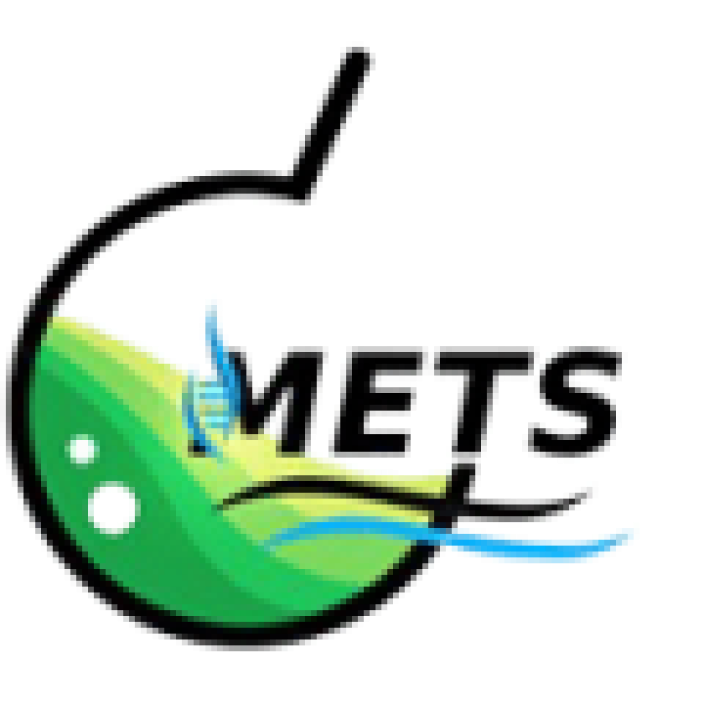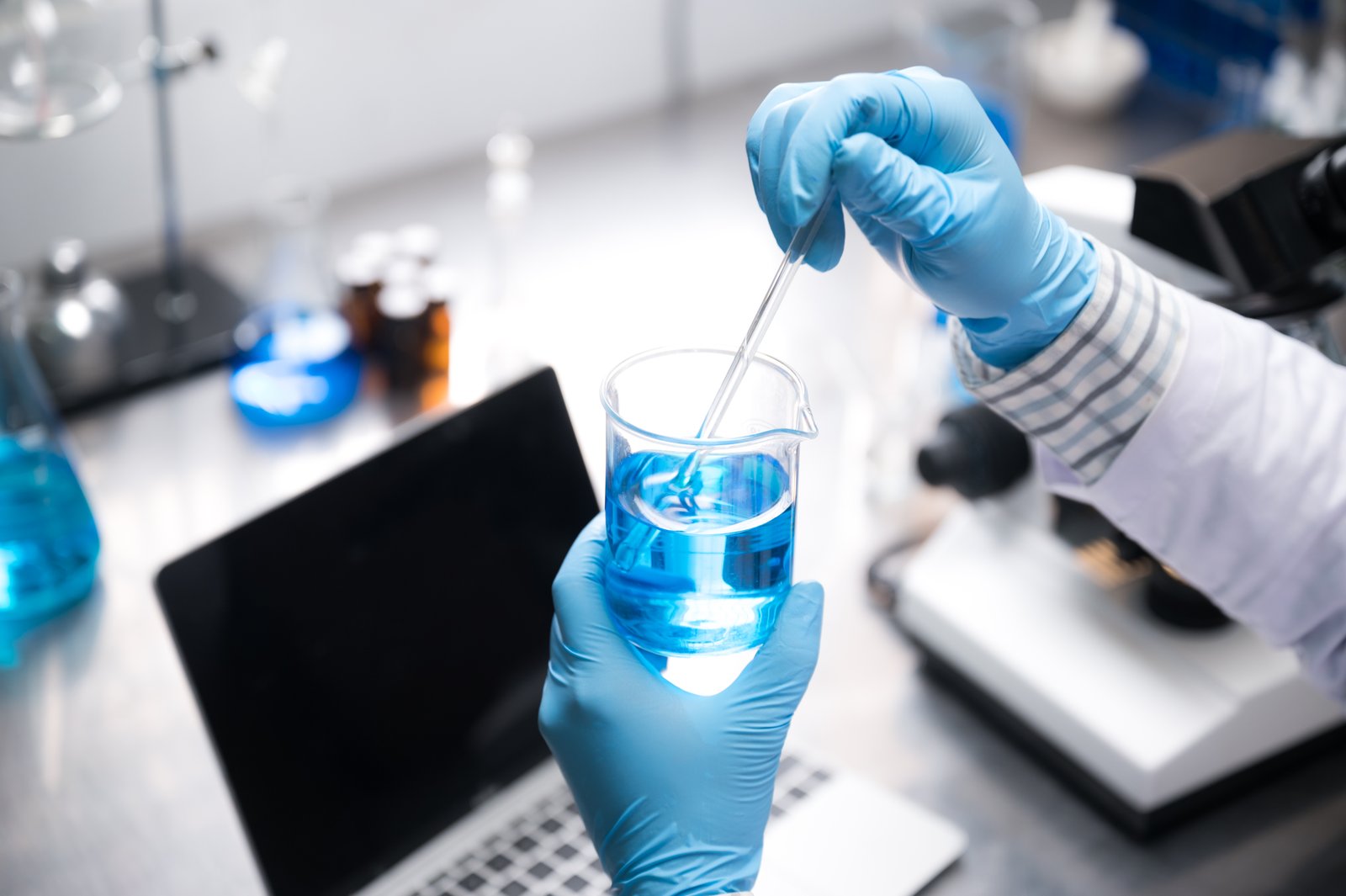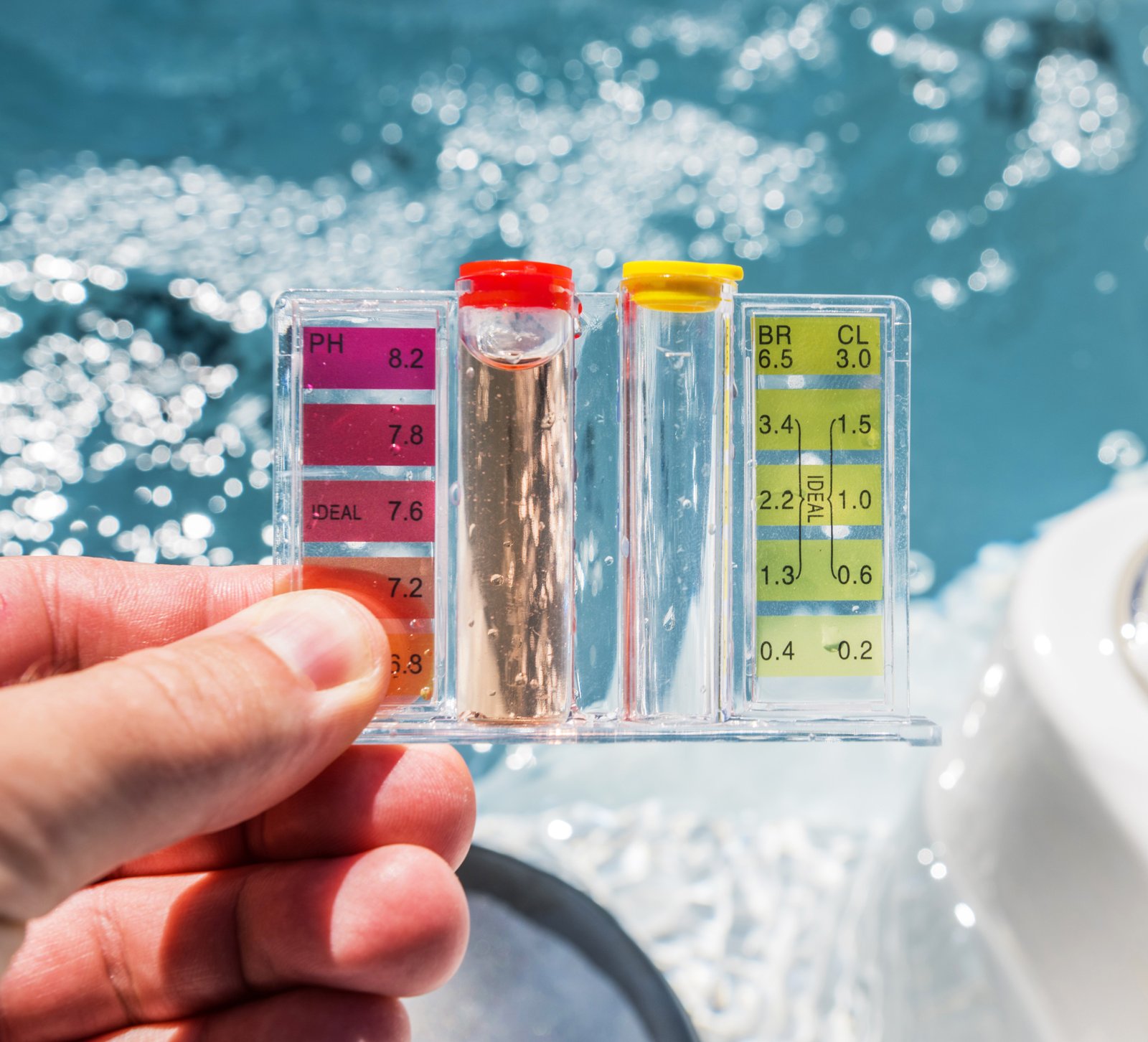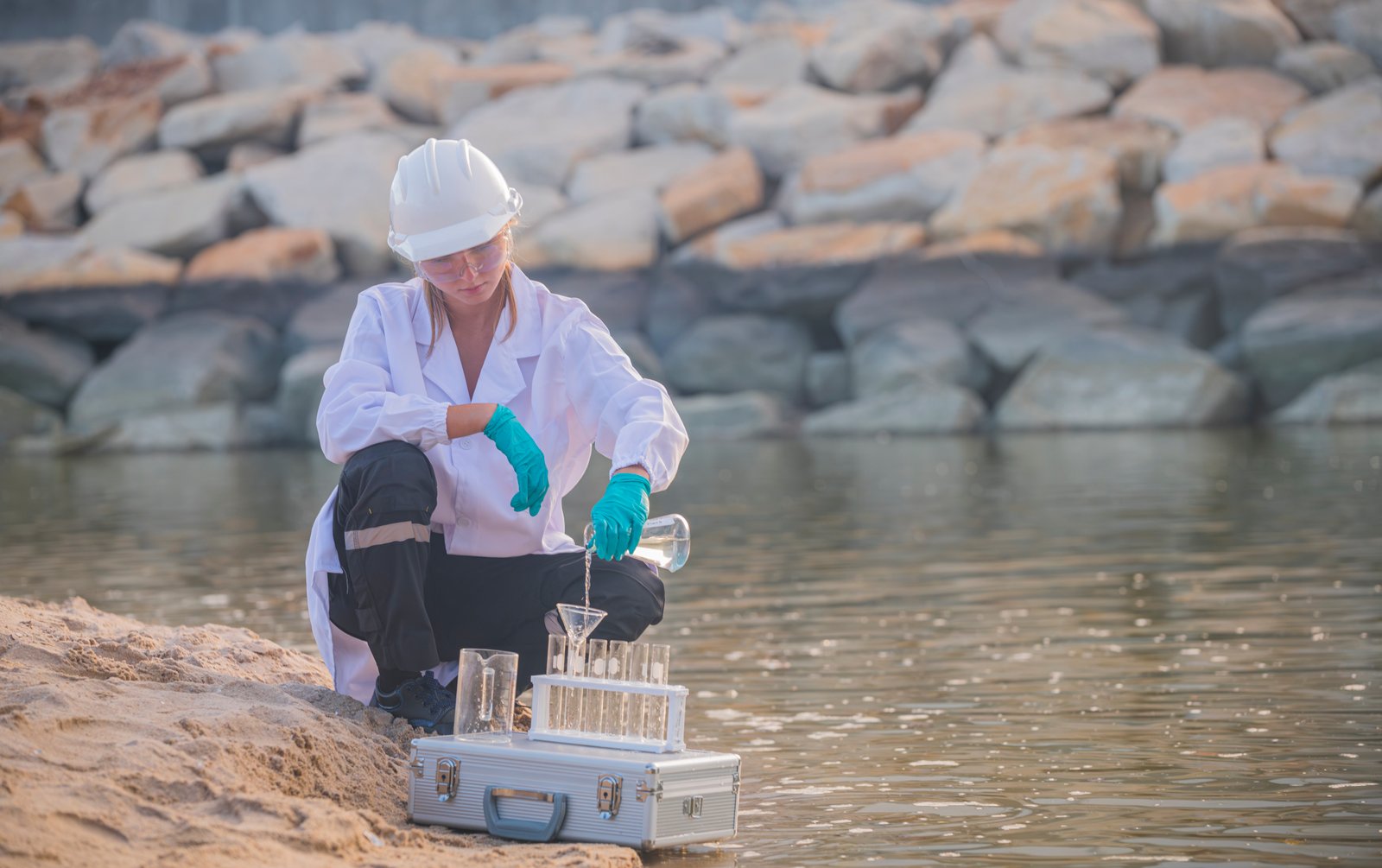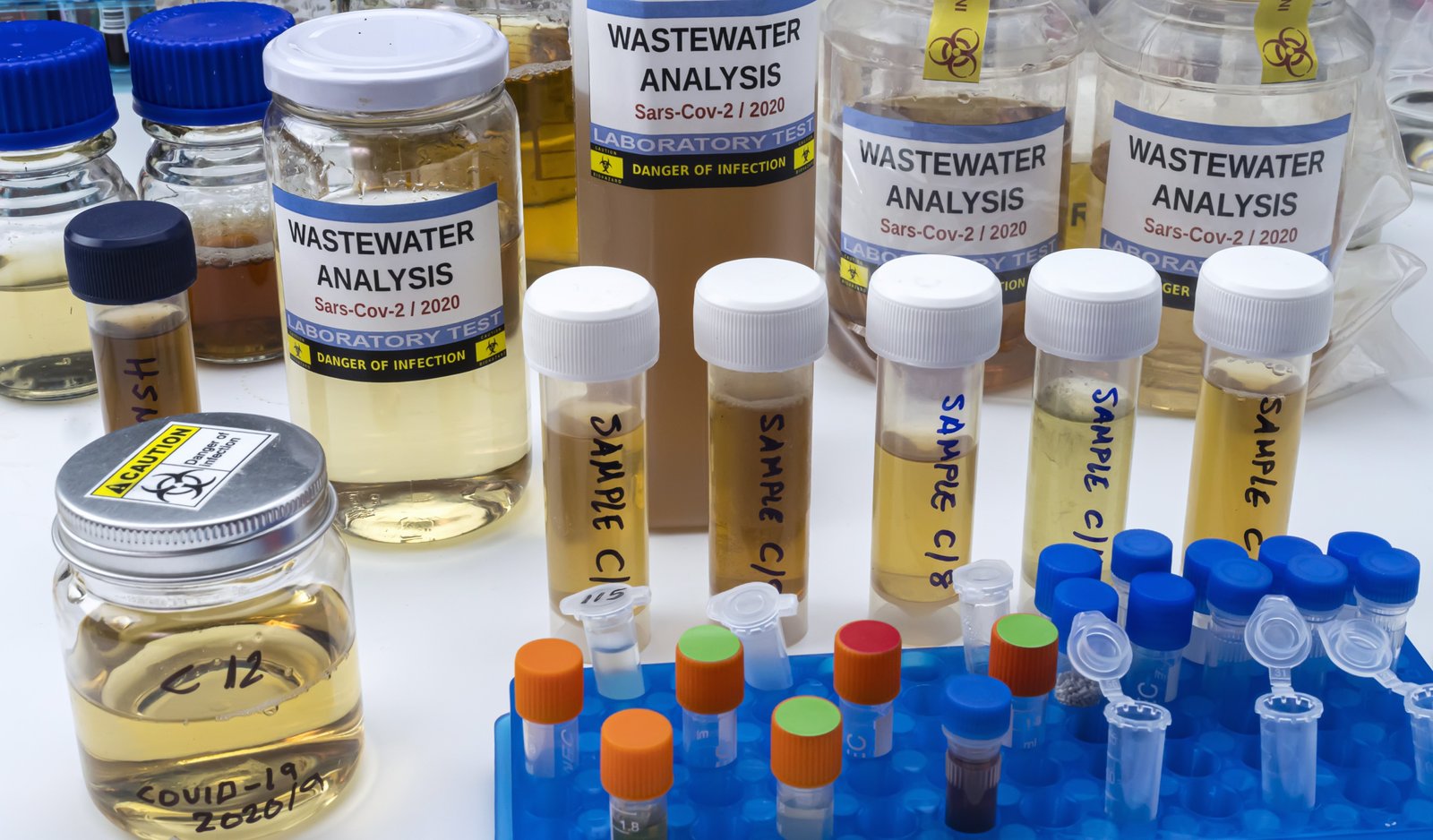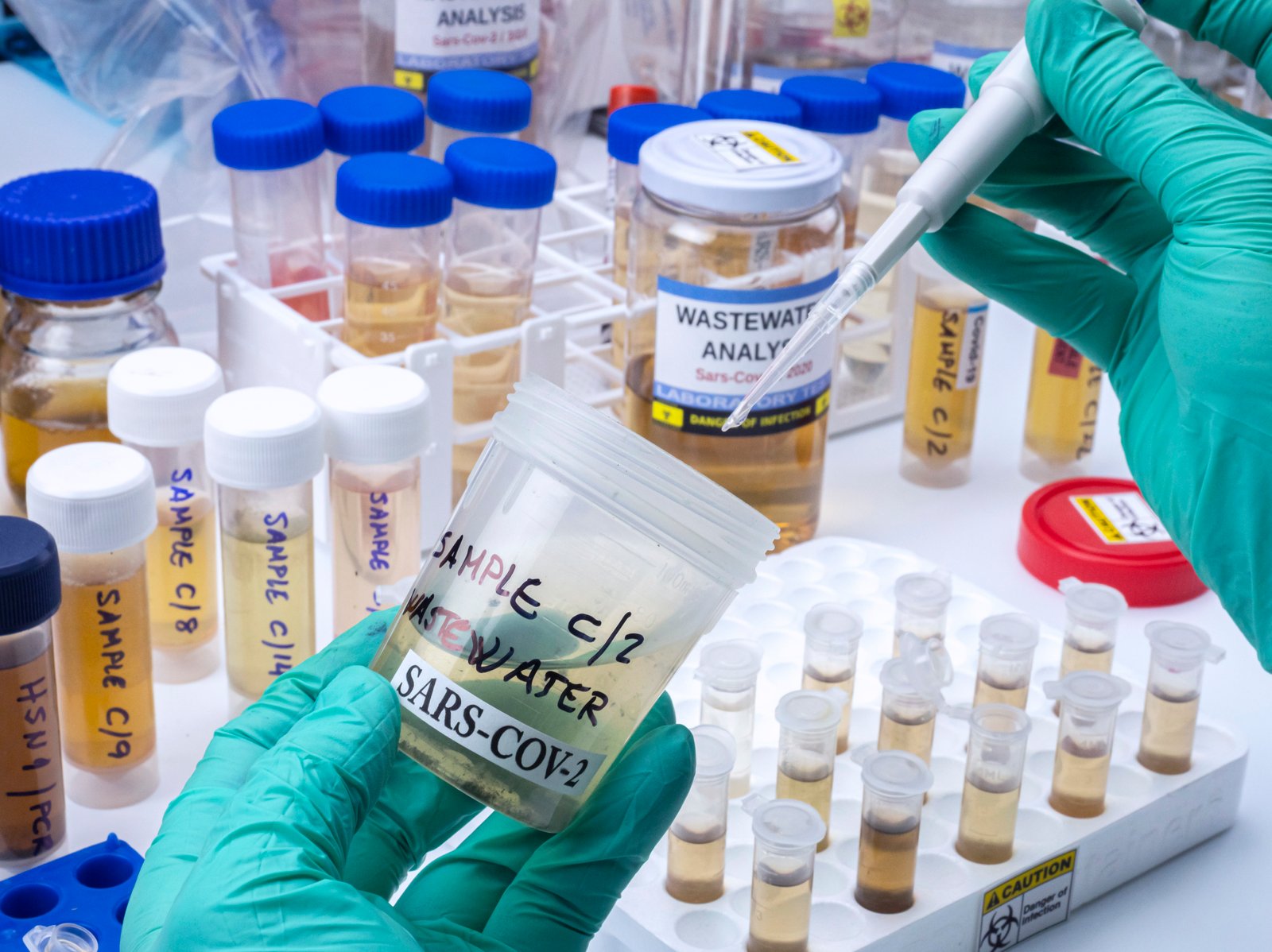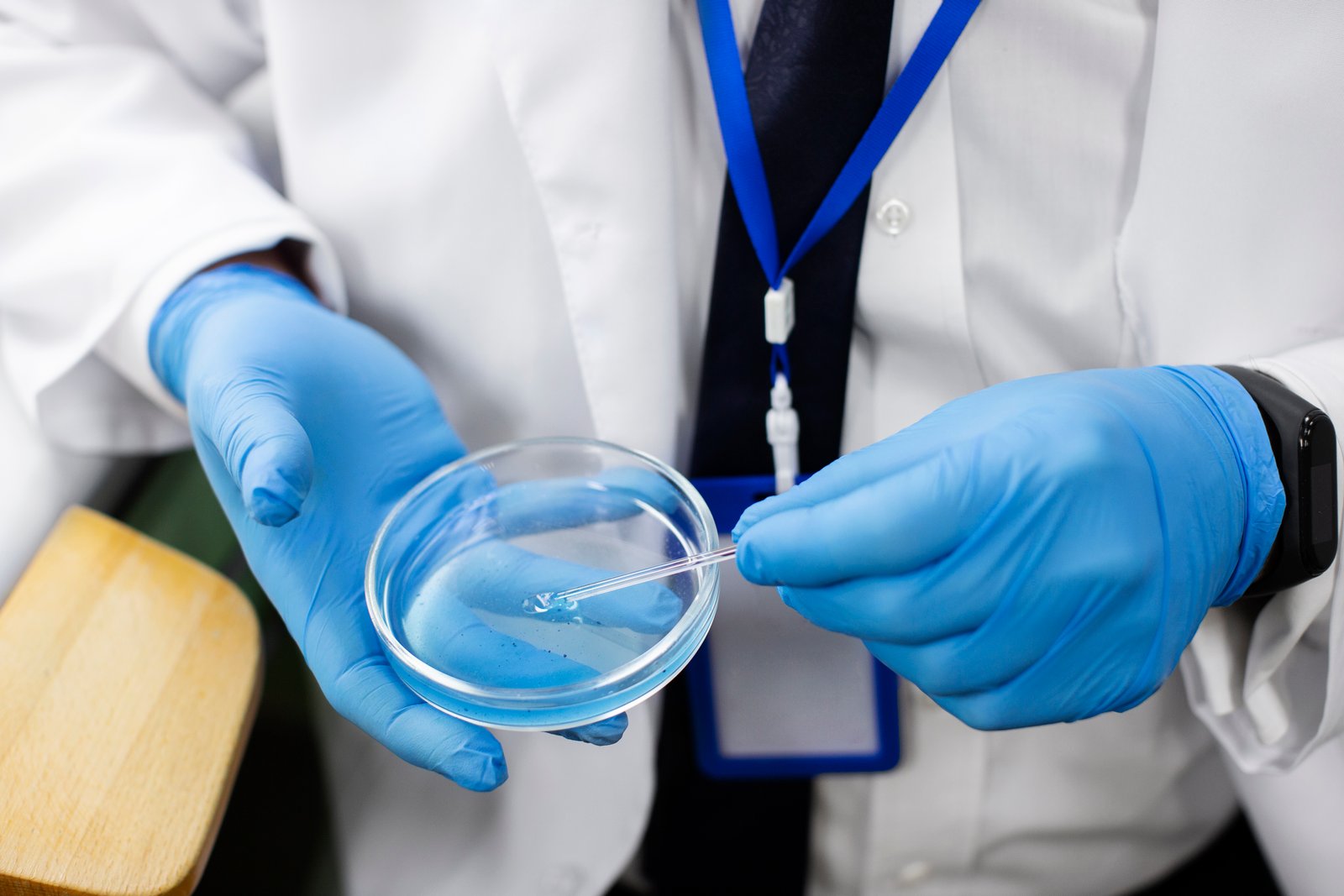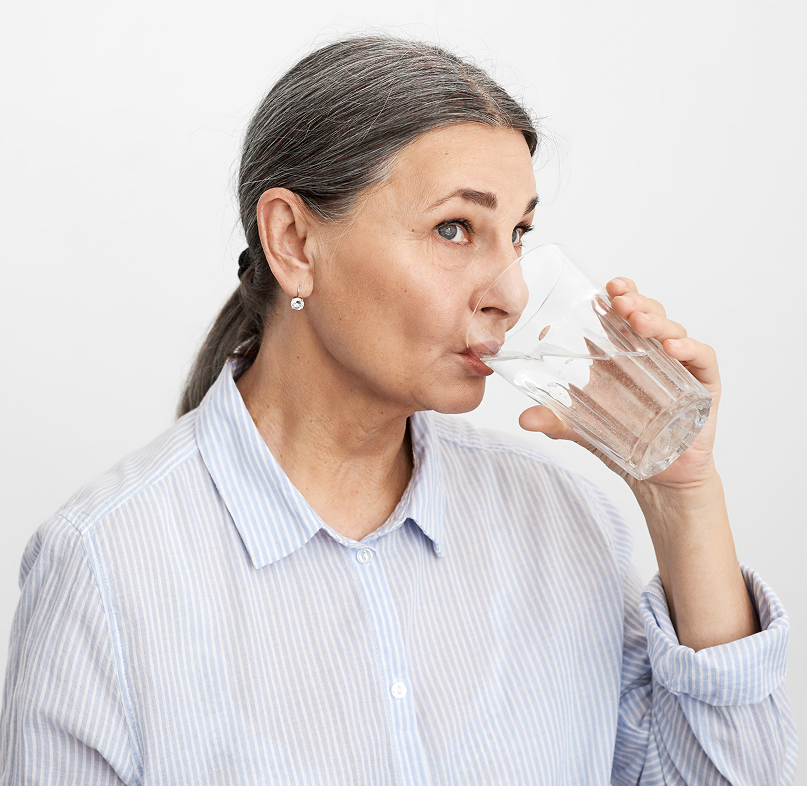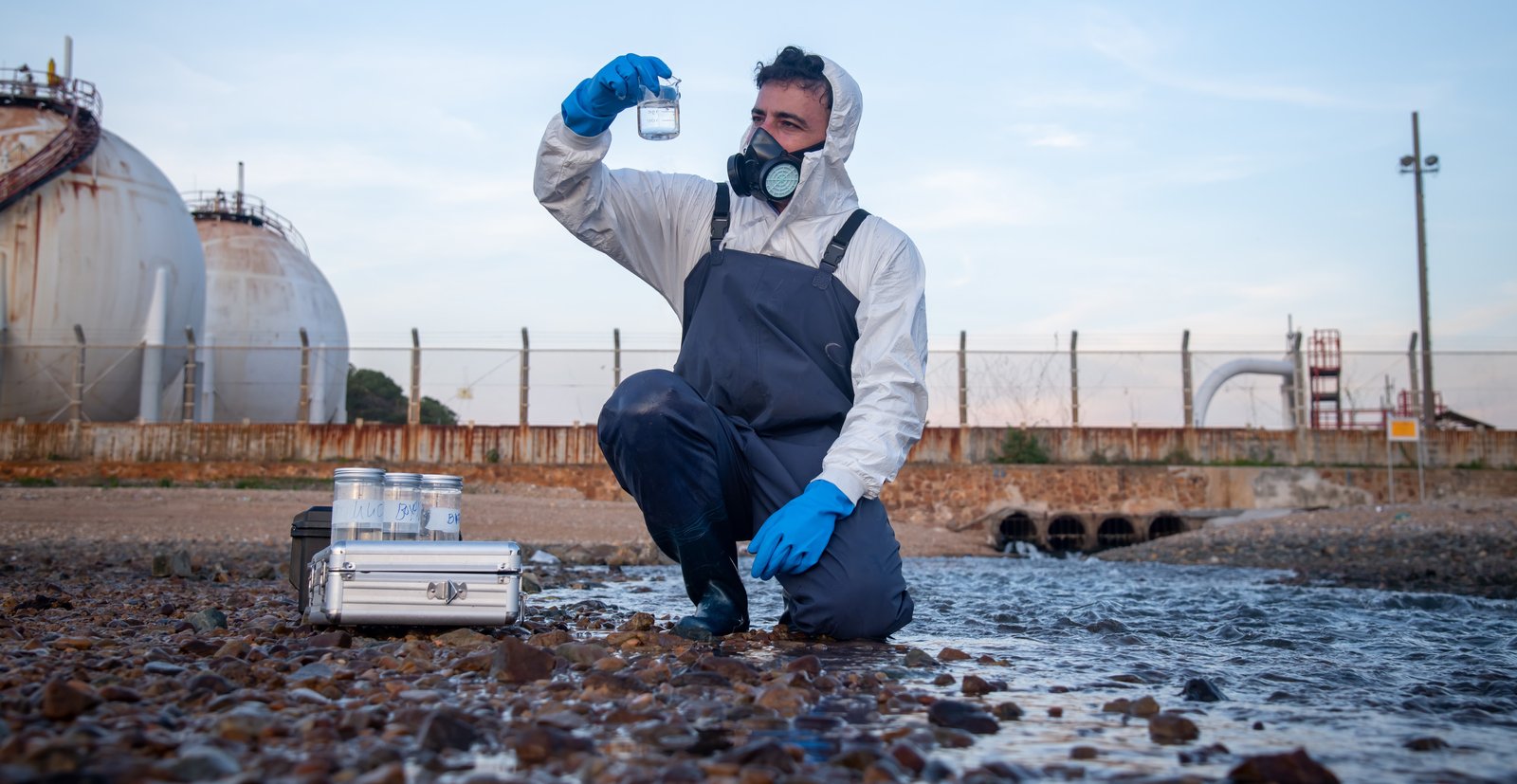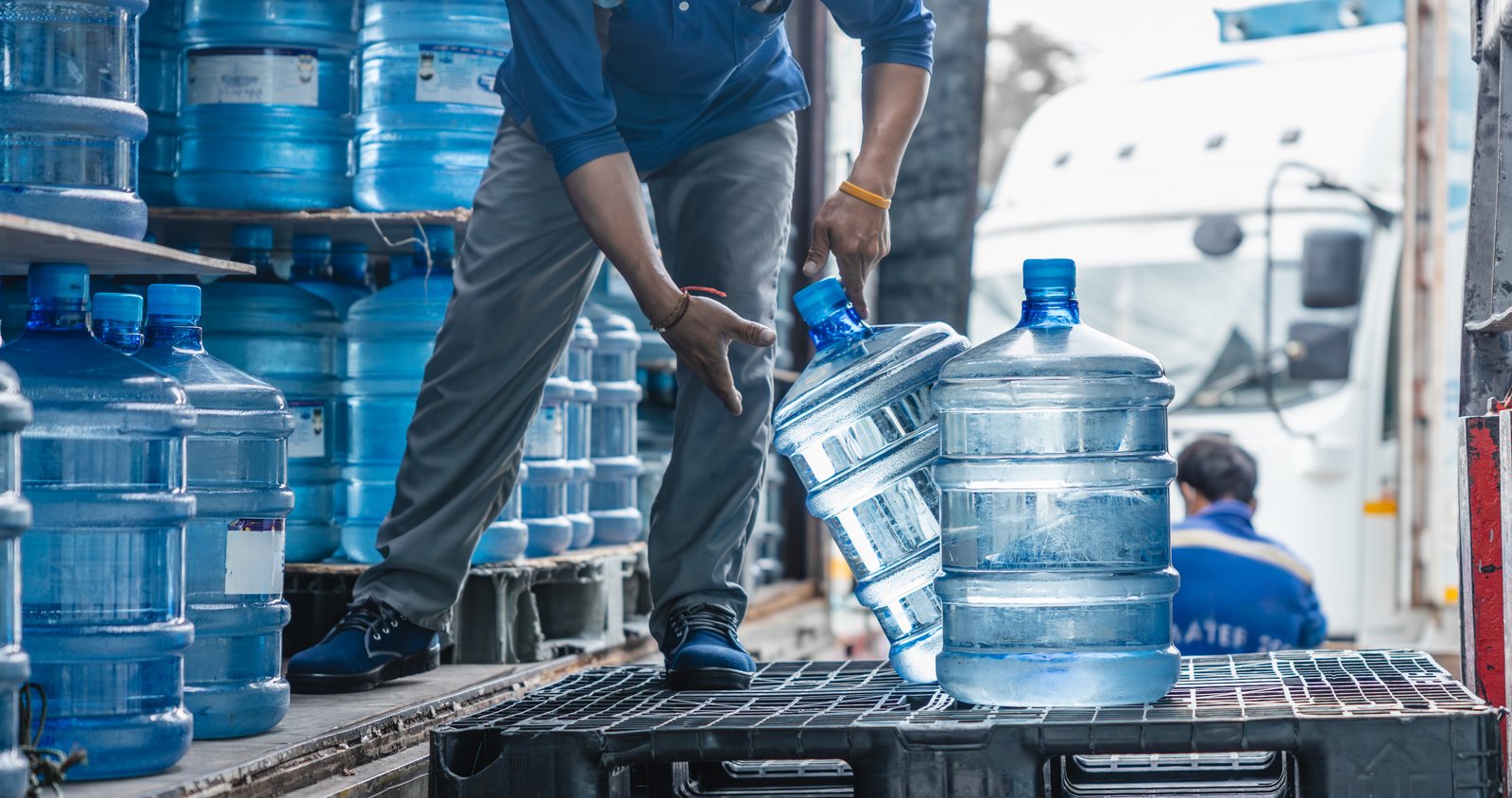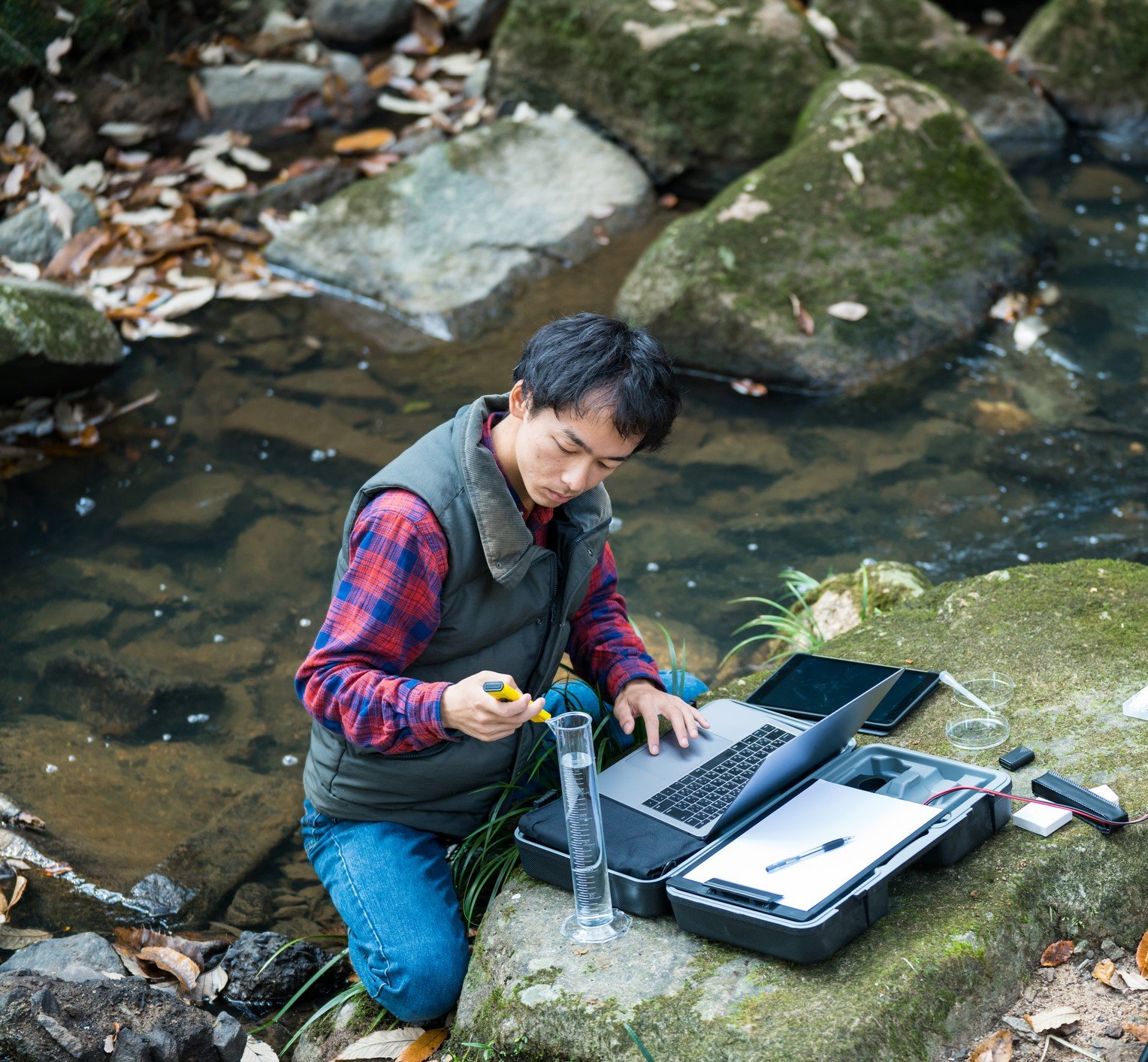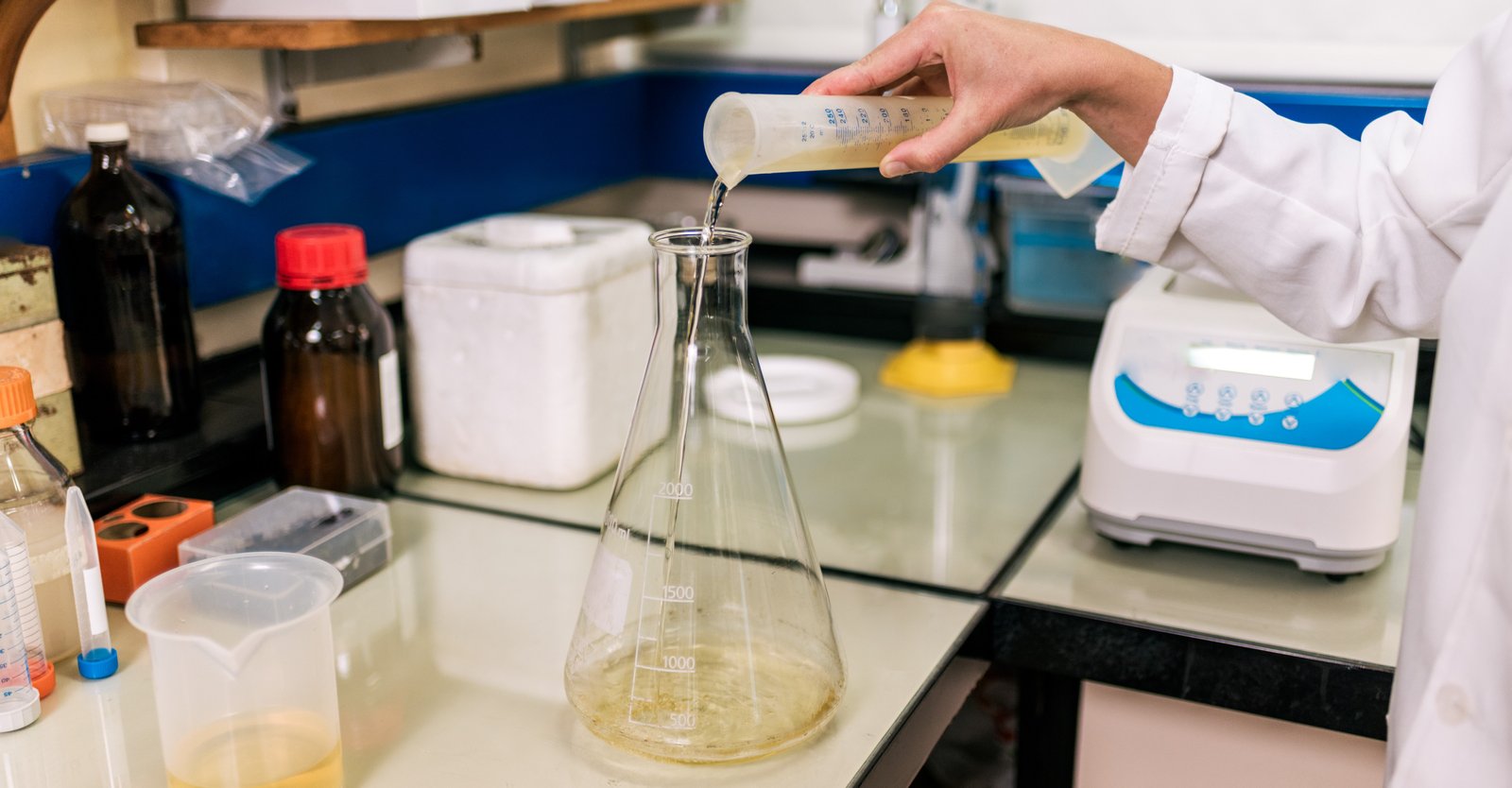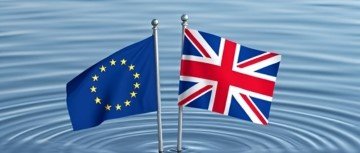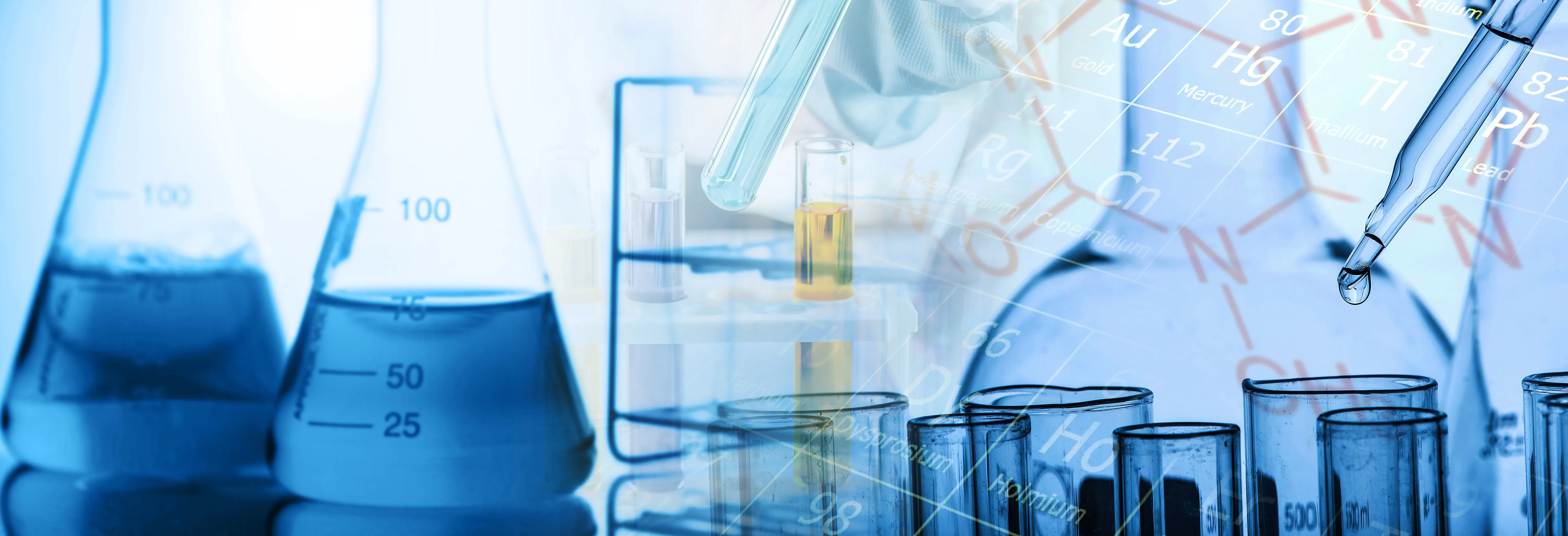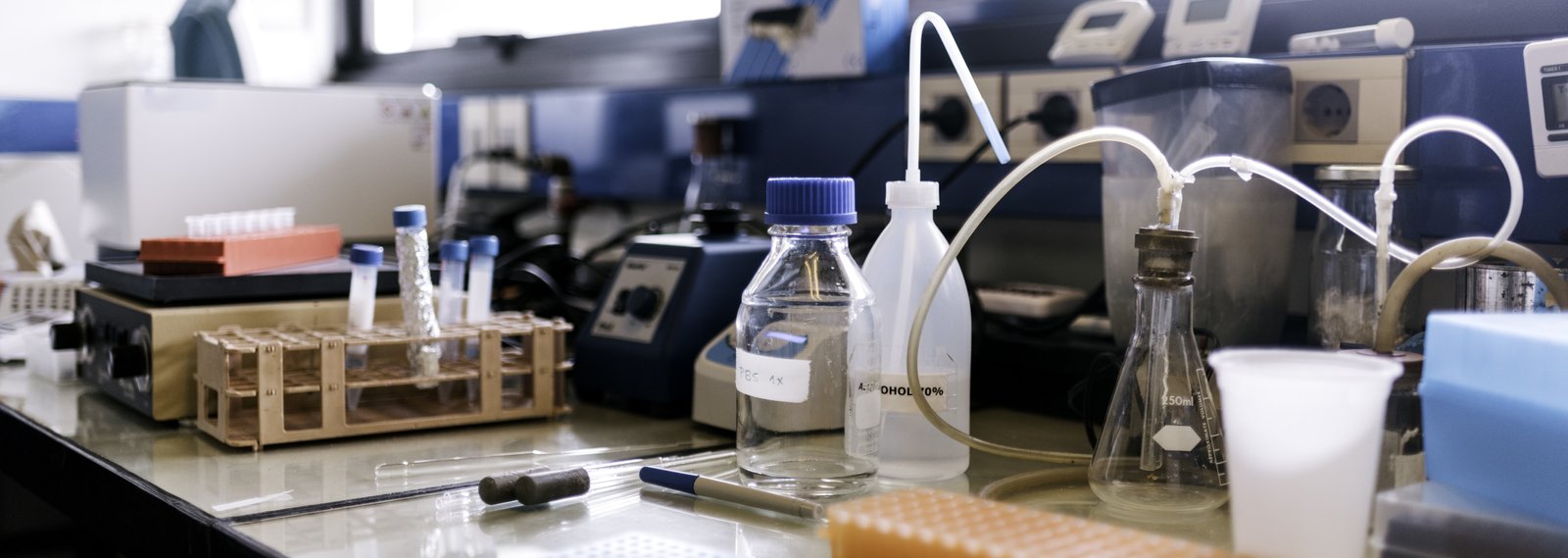Essential to all forms of life, water requires rigorous analytical assessment to ensure its purity
and fitness for use. In modern world, where environmental challenges intersect with complex
industrial needs and evolving health standards, comprehensive water analysis serves as a critical
safeguard.
METS Laboratories provide water testing solutions that address the complex requirements of
industrial operations as food, minerals, petroleum, manufacturing governmental bodies, and other
industries. Through our commitment to robust safety protocols, stringent compliance measures, and
sustainable practices, our advanced testing methodologies exceed global standards, thereby ensuring
superior water quality, enhancing community health, and fostering environmental stewardship.
Water Testing
Water testing includes trace analysis capabilities. Regulatory measures for safe drinking water are
crucial for public health, ensuring access to clean water and improving water quality. Government
agencies set standards, monitor sources and enforce regulations as WHO, water quality regulations of
UK and other European & International standards. METS-UK laboratory is approved by WRAS (Water
Regulations approval Scheme) to conduct the water quality testing requirements of BS 6920, both
non-metallic materials and components that come into contact with drinking water.
Our testing services range from drinking water to industrial water, agricultural & irrigation water,
environmental water, waste water, public health and emergency water.
Drinking Water
- Potable water
- Bottled water
- RO (reverse osmosis) water
Recreational Water
- Swimming pool water
- SPA & Hot tub water
- Natural recreational water
Industrial Water
- Boiler feed water
- Cooling tower water
- Process water
Agricultural & Irrigation Water
- Irrigation water
- Livestock water
Environmental Water
- Surface water
- Ground water
- Storm water
- Wastewater
Wastewater
- Municipal wastewater
- Industrial wastewater
- Greywater
Specialised Water
- Deionized water
- Distilled water
- Ultra-pure water
Recreational or Tourism-specific Water
- Theme park water
- Marine park water
Public Health & Emergency Water
- Hospital and Healthcare water
Our Water Analysis Services
METS Laboratories provide water quality testing and analysis on global bases. Our comprehensive suite
of
water analysis includes legionella management and toxic contaminants as well as the domestic testing
requirements like water quality-England & Wales, that will assist companies to meet regional
specific
legal requirements of water quality.
Chemical Analysis
Water plays an important role as a chemical substance, its many important functions include being a
good solvent for dissolving many solids, serving as an excellent coolant both mechanically and
biologically, and acting as a reactant in many chemical reactions.
One of the main aims of chemical testing is to check the quality of materials by identifying what
they are made of, and whether they contain anything that shouldn’t be there according to relevant
standards, requirements or regulations. Most chemicals arising in drinking water are of health
concern only after extended exposure of years, rather than months. In some cases, there are groups
of chemicals that arise from related sources—for example, disinfection by-products (DBPs)—and it may
not be necessary to set standards for all of the DBPs for which there are guideline values. If
chlorination is practised, the trihalomethanes (THMs) and halo-acetic acids (HAAs) will be the main
DBPs. If bromide is present, brominated as well as chlorinated DBPs will be produced. Maintaining
THM and HAA concentrations below the WHO-guideline values by controlling precursor compounds will
provide adequate control over other chlorination by-products.
In general, approaches to the management of chemical hazards in drinking-water vary between those
where the source water is a significant contributor (with control effected, for example, through
source water selection, pollution control, treatment or blending) and those from materials and
chemicals used in the production and distribution of drinking-water (controlled by process
optimization or product specification). Chemicals are therefore divided into five major source
groups,
1. Naturally occurring: Rocks, soils and the effects of the geological setting and
climate,
eutrophic water bodies (also influenced by sewage inputs and agricultural runoff)
2. Industrial sources and human dwellings: Mining (extractive industries) and
manufacturing
and processing industries, sewage, solid wastes, urban runoff, fuel leakages.
3. Agricultural activities: Manures, fertilizers, intensive animal practices and
pesticides
4. Water treatment or materials in contact with drinking water: Coagulants, DBPs,
piping
materials.
5. Pesticides used in water for public health: Larvicides used in the control of
insect
vectors of disease
Chemicals from industrial sources and human dwellings
Chemicals from industrial sources can reach drinking-water directly from discharges or
indirectly from
diffuse sources arising from the use and disposal of materials and products containing the
chemicals. In
some cases, inappropriate handling and disposal may lead to contamination (e.g. degreasing
agents that
are allowed to reach groundwater). Some of these chemicals, particularly inorganic substances,
may also
be encountered as a consequence of natural contamination.
It is important that chemical contaminants be prioritized so that the most important in the
country or
local region are considered for inclusion in national standards and monitoring programmes. METS
Laboratories provide reliable and accurate chemical analysis services to meet the regional as
well as
international regulations for water.
The legal standards in the UK were based on those which were set in Europe in the drinking water
Directive 1998 and subsequent revisions, together with national standards set to maintain the
high
quality of water already achieved are strict and include wide safety margin. They cover,
- Micro Organisms
- Chemicals such as nitrate and pesticides
- Heavy metals such as lead and copper
- Appearance, odor and taste
WHO Guidelines values for naturally occurring chemicals that are of
health significance in
drinking-water
| Tests/Parameters |
Guideline value (Maximum) (µg/l) |
| 1. Inorganic |
| Arsenic (As) |
10 |
| Barium (Ba) |
1300 |
| Boron (B) |
2400 |
| Chromium (Cr) |
50 |
| Fluoride (F) |
1500 |
| Manganese (Mn) |
80 |
| Selenium (Se) |
40 |
| Uranium (U) |
30 |
| 2. Organic |
| Cylindrospermopsins |
0.7 |
| Microcystins |
1 |
| Saxitoxins |
3 |
The chemical testing of drinking water as per UK regulations
| Tests/Parameters |
Acceptable value (Maximum) (µg/l) |
| Acrylamide (C3H5NO) |
0.10 |
| Antimony (Sb) |
5.0 |
| Arsenic (As) |
10 |
| Benzene (C6H6) |
1.0 |
| Benzo(a)pyrene (BaP) |
0.01 |
| Boron (B) |
1.0 |
| Bromate (BrO3-) |
10 |
| Nickel (Ni) |
20 |
| Nitrate (NO3) |
0.50 |
| Tests/Parameters |
Acceptable value (Maximum) (µg/l) |
| Cadmium (Cd) |
5.0 |
| Chromium (Cr) |
50 |
| Copper (Cu) |
2.0 |
| Cyanide (CN-) |
50 |
| 1,2 dichloroethane (C2H4C12) |
3.0 |
| Epichlorohydrin (C3H5ClO) |
0.10 |
| Fluoride (F) |
1.5 |
| Lead (Pb) |
10 |
| Mercury (Au) |
1.0 |
| Tests/Parameters |
Acceptable value (Maximum) (µg/l) |
| Pesticides |
| Aldrin |
0.030 |
| Dieldrin |
0.030 |
| Heptachlor epoxide |
0.030 |
| Heptachlor |
0.030 |
| Other pesticides |
0.10 |
| Pesticides (Total) |
0.50 |
| Polycyclic aromatic hydrocarbons |
0.10 |
| Selenium |
10 |
| Tetrachloroethene & trichloroethene |
10 |
| Trihalomethanes (Total) |
100 |
| Vinyl chloride |
0.50 |
Pathogens Transmitted Through Water
| Pathogens |
Type/Species/Group |
Health Significance |
| Bacteria: |
| Burkholderia |
B. pseudomallei |
High |
| Campylobacter |
C. coli, C. jejuni |
High |
Escherichia coli – Diarrhoeagenic
Enterohaemorrhagic E. coli |
E. coli O157 |
High |
| Francisella |
F. tularensis |
High |
| Legionella |
L. pneumophila |
High |
| Mycobacteria (non-tuberculous) |
Mycobacterium avium complex |
Low |
| Salmonella |
S. enterica, S. bongori |
High |
| Shigella |
S. dysenteriae |
High |
| Vibrio |
V. cholerae O1 & O139 |
High |
| Viruses: |
| Adenoviridae |
Adenoviruses |
Moderate |
| Astroviridae |
Astroviruses |
Moderate |
| Caliciviridae |
Noroviruses, Sapoviruses |
High |
| Hepeviridae |
Hepatitis E virus |
High |
| Picornaviridae |
Enteroviruses, Parechoviruses & Hepatitis A virus |
High |
| Reoviridae |
Rotaviruses |
High |
| Protozoa: |
| Acanthamoeba |
A. culbertsoni |
High |
| Cryptosporidium |
C. hominis/parvum |
High |
| Cyclosporia |
C. cayetanensis |
High |
| Entamoeba |
E. histolytica |
High |
| Giardia |
G. intestinalis |
High |
| Naegleria |
N. fowleri |
High |
| Helminths: |
| Dracunculus |
D. medinensis |
High |
Pathogenic microbes in drinking water, Directive/National requirements-UK
| Tests/Parameters |
Acceptable value (Maximum)
µg/l |
Units of measurements |
| Coliform bacteria |
0 |
Number/100ml |
| Escherichia coli (E. coli) |
0 |
Number/100ml |
| Enterococci |
0 |
Number/100ml |
Why is testing in this category significant?
Water quality fundamentally influences population health, manufacturing efficiency, natural resource
conservation, and agricultural yields. Systematic testing enables early risk identification, ensures
regulatory alignment, and promotes sustainable water management. From protecting public wellness to
enhancing industrial processes and preserving ecosystems, precise water analysis serves as an
essential tool across all sectors.
What are the European regulations/standards on different water matrices?
At the heart of our laboratory's mission lies an unwavering dedication to analytical precision in
water testing. We have carefully built our reputation on a foundation of scientific excellence,
backed by the most rigorous international accreditations in our field. As a UKAS accredited testing
facility, we represent the gold standard in British laboratory services, demonstrating our technical
competence through every analysis we perform.
The cornerstone of our analytical framework rests upon our EN ISO/IEC 17025:2017 accreditation,
universally recognized as the defining standard for testing laboratories. This accreditation
reflects our proven ability to consistently deliver precise, reliable results across our entire
testing spectrum. We further strengthen our quality assurance through our ISO 9001:2015
certification, ensuring that every aspect of our operations meets international quality management
standards.
Our water testing protocols embrace the exacting requirements of ISO 5667 for sampling procedures,
while our analytical methods align perfectly with WHO drinking water quality parameters. Within the
UK context, we proudly maintain our MCerts certification, validating our expertise in environmental
water testing. Our methodologies strictly follow the Standing Committee of Analysts (SCA) guidance,
ensuring complete compliance with the Drinking Water Testing Specification (DWTS).
Quality assurance at our laboratory goes beyond mere certification. Each analysis undergoes a
rigorous journey through our multi-tiered quality control system. From initial sample receipt
through final reporting, every step is monitored, validated, and documented. Our participation in
regular proficiency testing schemes ensures that our results consistently meet the highest standards
of accuracy. This commitment to quality extends to our investment in advanced analytical
instrumentation, regular method validation, and comprehensive staff training programs.
We understand that behind every water sample lies a critical need for accurate, reliable data.
Whether supporting public health decisions, environmental monitoring, or industrial processes, our
results provide the scientific foundation for informed decision-making. Our technical experts stand
ready to guide you through our testing capabilities and help you understand how our accredited
services can support your analytical needs.
